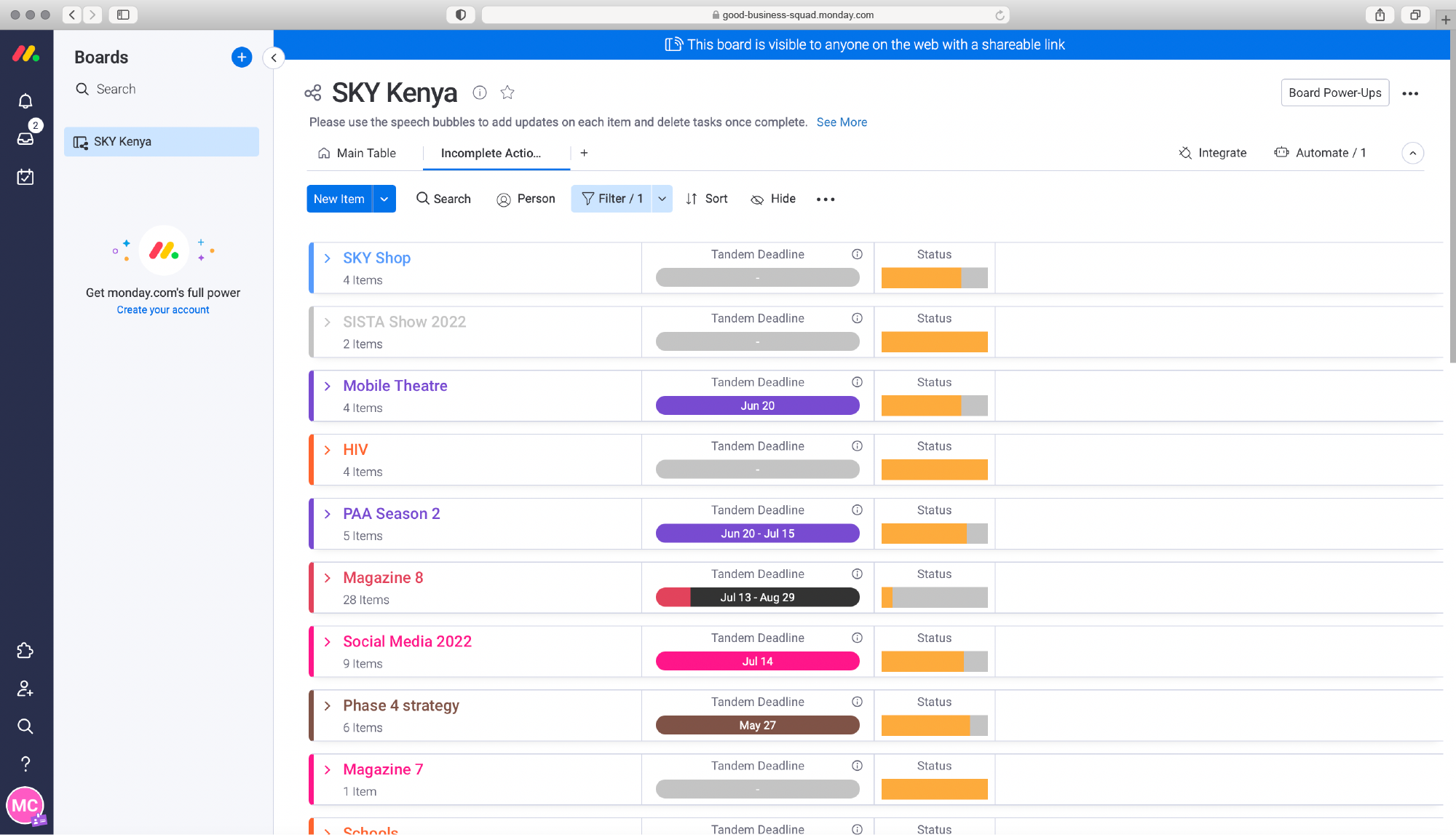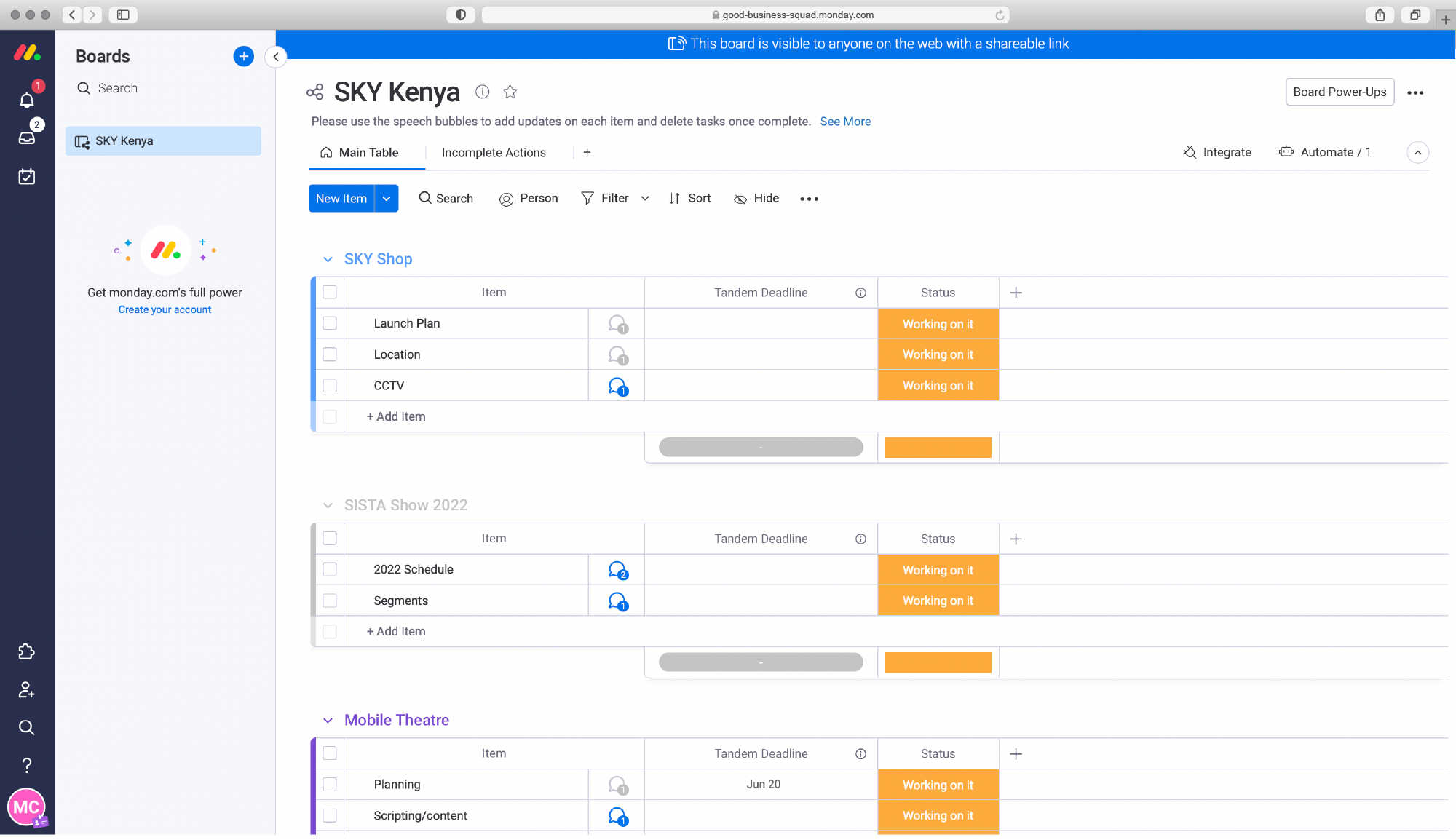Planning your launch
Once you’ve contracted your partners and finalised your channel and brand strategy, you can begin launching the intervention.
Define your objectives for the launch
For each objective, set out how you will measure your success, e.g. social media following, number and sentiment of press mentions, etc.
Creating a timing plan
For your launch period, split by channel to show when and how you will launch each one to create ongoing excitement (you can use the template linked below). Make sure your plan includes what needs to be done before the launch date to prepare, and factors in key dates for your audience, such as holidays.
Notify relevant stakeholders
To make sure they know what you’re planning and are ready to support it (see Stakeholder Engagement).
Allocate budget for this period
This may be higher than your running costs as a whole due to the start-up costs of launching new channels, but should still be proportionate to the overall campaign
Prepare resources
This might include physical resources (such as merchandise), media resources (e.g. a PR plan) but also human resources (e.g. ensuring that any services you are promoting are well-equipped for a rise in demand).
Additional Resources
SKY Girls First 100 Days Plan
SKY Girls Channel Strategy Template
Stakeholder mapping and engagement
Stakeholder engagement brings a range of benefits: stakeholders can help you access knowledge, spaces and resources that will improve your intervention (for example, permission to run clubs in schools, or insights into alcohol usage among teenagers). Gaining the trust of key stakeholders also helps to avoid the risk of competitors or critics derailing your intervention.
Depending on the nature of your intervention, key stakeholders might include:
Religious or community leaders
Local or central government authorities
Research bodies or universities
Celebrities or local influencers
International and local NGOs or charities
Policy or campaign groups
Other social marketing programmes targeting a similar audience/issue
Additional Resources
SKY Girls Stakeholder Tracker
Stakeholder engagement strategy
Your stakeholder engagement strategy will need to answer the following questions:
Which stakeholders should we seek to engage?
What are we aiming to gain from each stakeholder that will benefit our intervention? e.g. Access to schools, reduced threat of negative media publicity.
How should we engage each stakeholder? e.g. Hosting an event, writing a letter, setting up a meeting through existing networks.
When should we engage each stakeholder e.g. Which stakeholders should be supportive of the programme prior to launch? Which can we contact further down the line?
What message will persuade this particular stakeholder to support our intervention?
Additional Resources
SKY Girls Stakeholder Engagement Brief

Stakeholder engagement
In our experience, the best time to engage with local stakeholders (other than those who are necessary for the formative research) is after planning but before launching in market. This gives time for stakeholders to be ‘bought in’ before the programme is opened to public scrutiny, but also means implementers can provide enough detail to ensure the programme is taken seriously and be clear on what is needed from different stakeholders.
Engage the Gatekeepers
Experience launching the SKY Girls programme in both Botswana and Ghana revealed some important differences. In Botswana, girls had more freedom to go where they pleased, and could attend SKY Girls events with fewer parental barriers. In Ghana, parents were more likely to restrict girls’ movements, meaning that our launch phase in Ghana had to include a parent-facing campaign on radio, out of home and our website, working with a popular TV presenter to make sure parents knew SKY Girls was a movement they could trust.
The fundamentals
At the same time, you’ll need to get the fundamentals in place to ensure your programme runs safely and smoothly.
Safeguarding policies and processes
Project management systems
Budgeting and financial tracking systems

Safeguarding
The safety of everyone involved in and affected by your programme must be your first priority. At SKY Girls, the key staff responsible for delivering the programme in all markets are given formal safeguarding training by a professional safeguarding organisation. We also contract local safeguarding experts in every SKY market who can be on-hand to support and advise in an emergency situation.

Project Management
When implementing a complex cross-channel programme with multiple partners across different markets, having a good project management systems in place is essential. At SKY Girls we use Monday.com, a cloud-based work management platform, for partners to update each other on progress and deadlines for each workstream.


Programme Roll-Out
By the time you launch, you should already have a clear plan for how your intervention messaging will roll out over time to deliver on all your objectives within an agreed period.
Once launch is over, you can move to the next phase of your plan. This phase should also build on the successes of the launch (for example, brand value created) as well as plug gaps you identified during the launch phase (e.g. supplementing digital channels with physical ones; reaching a different subsection of your target audience).
During the roll-out phase, ongoing strategic guidance and oversight will be essential for keeping the programme on track to meet its objectives, even if much of the day-to-day implementation is being done by partners or contractors.
Additional Resources
SKY Girls Kenya Phase 2 Brief
